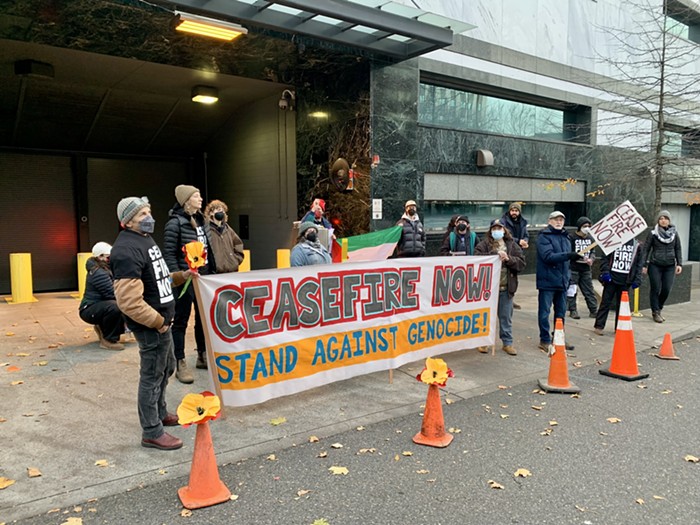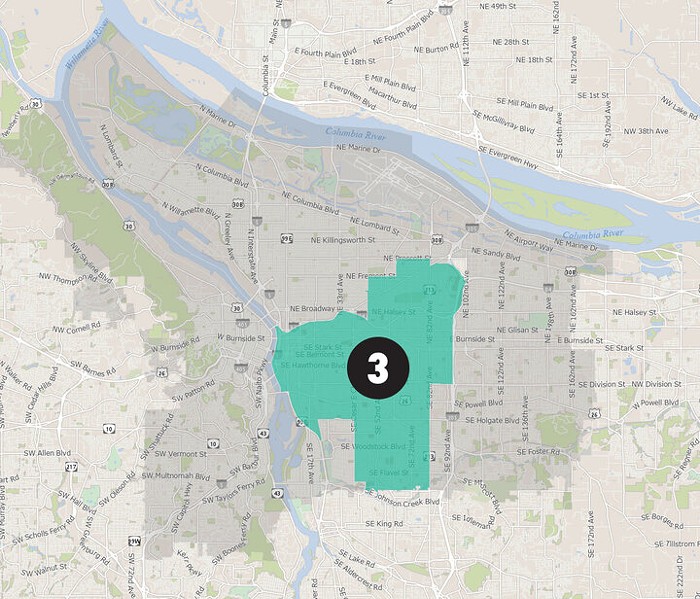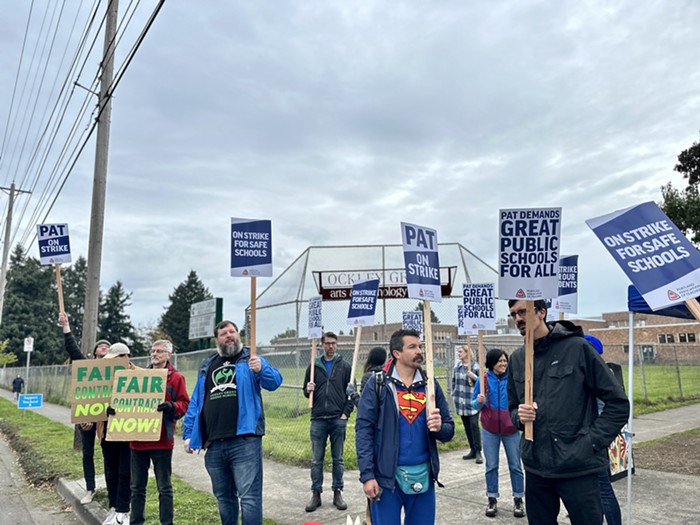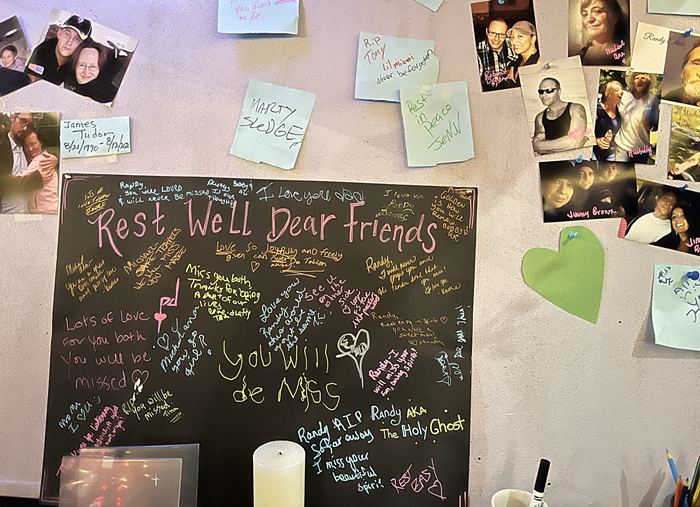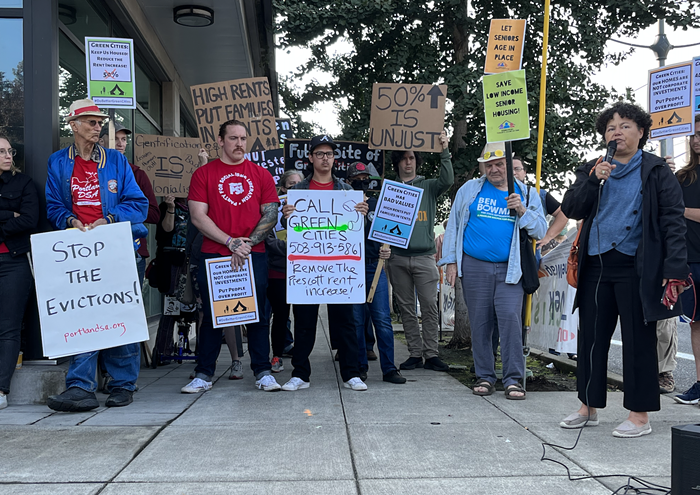
The disclosure was one of several new pieces of information offered to roughly 100 concerned parents who send their children to the CCLC at Fred Meyer. The day care is located a stone's throw from the glass factory state officials disclosed this week might have been emitting arsenic and cadmium—both carcinogens—for decades. The meeting was attended by officials with the Oregon Department of Environmental Quality (DEQ), Oregon Health Authority (OHA), and Multnomah County Health Department, and held in a nearly full ballroom at the Lloyd Center Doubletree.
For an hour and a half, the parents got more information from officials than has otherwise been offered to the public since DEQ air testing turned up potentially alarming levels of the two toxic substances on January 20—the result of tests taken over a month last fall. The Mercury's already reported on much of the information that was offered up at the meeting, but here are a few takeaways:
•This was a big surprise. DEQ officials are stressing how caught off-guard they were from the findings, saying repeatedly that it's "all hands on deck" as the agency tries to create maps that suggest where arsenic and cadmium might have spread, and in what levels. David Monro, DEQ's air quality manager for the Portland area, said the agency hadn't been aware of the kinds of threat posed by art glass manufacturers like Bullseye, and that the findings could reverberate to other localities in the Pacific Northwest.
•The levels of arsenic and cadmium look bad, but there are caveats. As the Mercury reported Wednesday, the monthly average for arsenic in the vicinity of Bullseye last October were almost 160 times the DEQ's ambient benchmark standards last October. Cadmium levels were an average of 49 times higher. These benchmark standards represent a level beyond which officials might look closer at air quality. OHA toxicologist David Farrer explained that being repeatedly exposed to benchmark levels for arsenic or cadmium might mean a 1 in a million chance of getting cancer (above and beyond the many other risks and causes). So to be exposed to levels nearly 160 times as high, might result in a 160-in-a-million chance.
It's not just cancer, though. The averages DEQ found are roughly double benchmarks for potential neurological development issues in kids (in the case of arsenic) and nearly three times bench marks for possible kidney damage (in the case of cadmium). But Farrer stressed those risks are based on persistent exposure, and that the benchmarks are "very health protective," designed to be well under levels that might actually cause harm. He described the benchmarks as warning signs, saying: "It means you've come to a sign that says the bridge is out... It doesn't mean you've gone off the cliff."
Officials also suggested that last October might have been something of an outlier: It wasn't very windy, meaning pollutants might have amassed more than they would at other parts of the year.
•The DEQ's not clamoring for more regulatory power—yet. One especially worrisome part of this case is that Bullseye is in full compliance with its state emissions permits. So even though the company has voluntarily stopped coloring its glass with cadmium and arsenic since hearing about the findings, no law says it can't start using them again whenever (there is no indication the company would do this). Monro was asked tonight whether the state should have a bigger stick, and demurred. "Right now we've kind of got an all hands on deck to get all the information out there," he said.
•About that information: It might be coming soon. Monro said he hoped the DEQ might be able to release the maps detailing where the toxics have gathered by tomorrow, but made no promises.
•Air levels are probably okay today. Given the persistent rain, and the fact that Bullseye has ceased using arsenic and cadmium for now, officials at the meeting suggested that air quality levels are likely acceptable right now—while making absolutely clear that they didn't have data to back that up. Asked whether people should allow their children to play outside in the area, Farrer said: "It seems to me it would have cleared rapidly. If it were my kids, I would let them go out and play."
•The OHA isn't recommending any testing now. But if you do want to get your kids tested for arsenic or cadmium exposure, it should only be a urine test, Farrer said. He recommended going through your regular pediatrician, but having them confer with the Northwest Pediatric Environmental Health Specialty Unit at the University of Washington. (Also, no seafood for five days or so beforehand—it can lead to false arsenic hits, Farrer says.)
•It's possible these emissions have occurred for decades. Arsenic and cadmium have "been ingredients in colored glass for a long time," Monro said. "I would not be surprised if they were using it when they started" in 1974.
•Not a day care parent? You'll be able to ask questions next week. Officials plan to announce a public forum on Tuesday, at Cleveland High School.
MORE COVERAGE:
State Finds Alarmingly High Arsenic, Cadmium Levels Near Two SE Portland Schools
Bullseye Glass Has Suspended Use of Arsenic and Cadmium Because of Air Quality Concerns
Portland Public Schools Is Ordering Air Tests Because of Arsenic, Cadmium Concerns: "We Need A Public Meeting"


